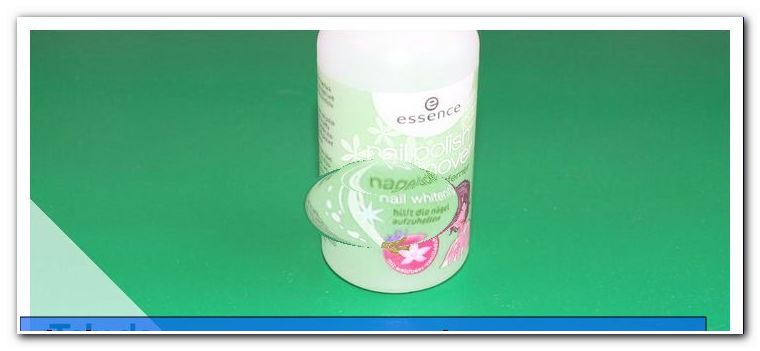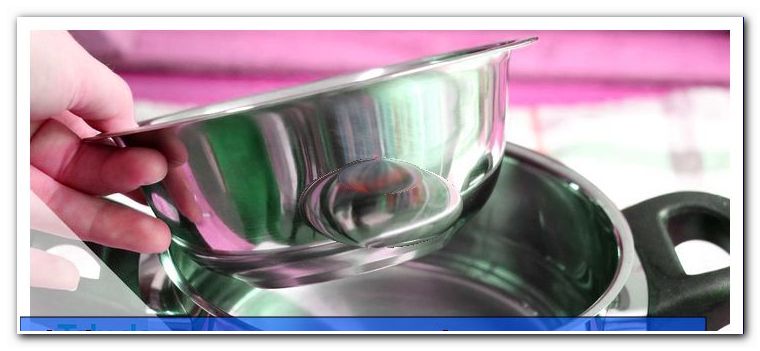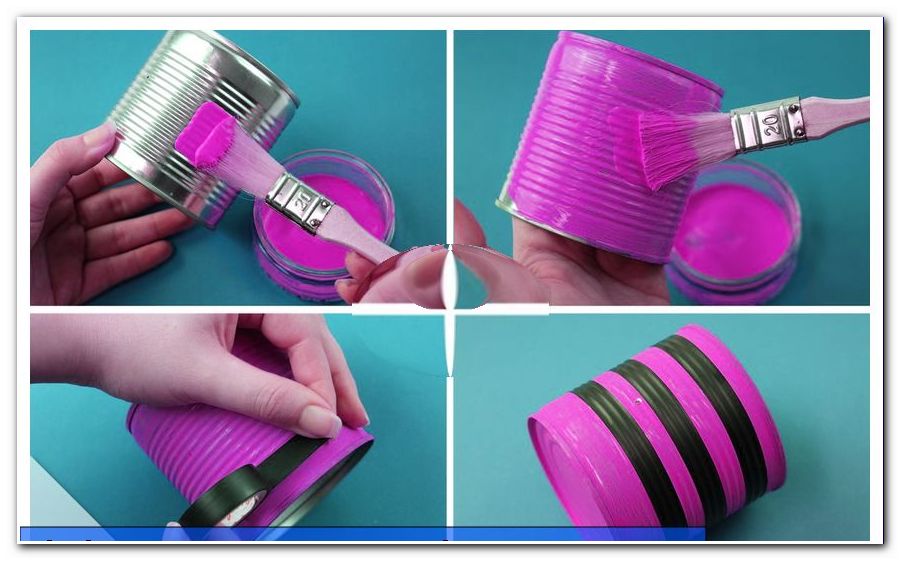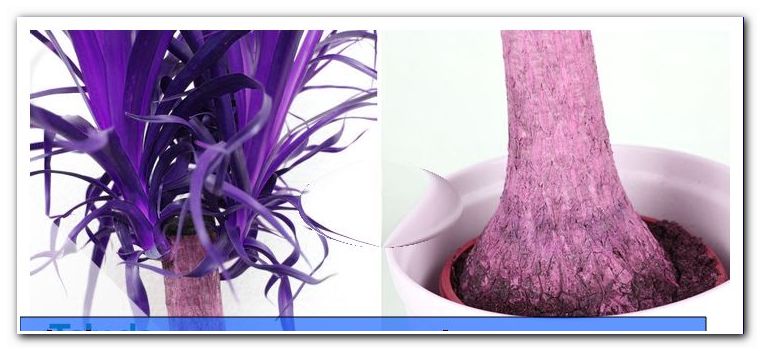Glue plastic - all variants in the practical test

- Theoretical part
- The plastic types
- Types of adhesive
- Practical part
- The preparation
- Plastic glue in the household
- The UHU Allplast
- The Pattex Special
- Plastic stick in the garage
- Würth REPLASTeasy plastic adhesive
- Plastic stick in model cellar
- The UHU Hart
- Conclusion
Whether in the home, in the garage or in the model cellar - there are almost everywhere plastic objects. What to do if the utensils suddenly show signs of damage ">
Plastic has become an integral part of our modern life. In fact, there is hardly anything that could not be made from this versatile material. It is therefore not surprising that plastics have replaced and displaced natural materials in many areas - a development that is not entirely unproblematic: most plastics take a long time to rot, which makes waste disposal considerably more difficult and harmful to the environment. For cracked or otherwise defective plastic objects, which can still provide useful services in itself, should therefore be the motto: Better repair than throw away! Modern plastic adhesives ensure durable results. We provide you with short theoretical explanations of the different types of plastic as well as practical tips for using the different adhesive variants!
Theoretical part
The countless plastics are divided into three large groups:
- thermoplastics
- thermosets
- elastomers
Despite their differences, all plastics have a great deal in common: the choice of the respective starting materials and the exact manufacturing process allow their technical properties - such as hardness, elasticity, temperature resistance and breaking strength - to be varied almost indefinitely. So for almost every purpose a specially suitable plastic can be developed and produced.
The plastic types
thermoplastics
Thermoplastics are also called plastomers. They can be deformed in a certain temperature range. This is a reversible process. This means that the thermoplastics can be heated and cooled down as often as required. Only in case of overheating the material disintegrates. One speaks then of the "thermal decomposition". In addition, plastomers are weldable. Polyamide, polypropylene and polystyrene are examples of thermoplastics that are used, among other things, for the manufacture of spectacle frames, battery boxes and ballpoint pens.
thermosets
In contrast to thermoplastics, thermosets, also called duromers, can no longer be deformed after they have hardened. Light switches, sockets or trays are made of aminoplastics, cooking spoons and kitchen furniture surfaces are often made of phenolic. Both substances are among the thermosets.
elastomers
Elastomers are dimensionally stable, but elastically deformable plastics. This means that they can change their shape under tensile and compressive loading, but then find their original - so undeformed - design back. Elastomers such as polyurethane are used, for example, in tires, rubber bands, sealing rings and mattresses. 
Types of adhesive
Now we take care of the bonding of plastics, but at first remain (half) theoretical!
In addition to the different types of plastic, the plastic adhesives are divided into several large groups:
- wet adhesives
- Contact adhesives
- Reaction adhesives (one-component and two-component)
- melt adhesives
wet adhesive
With wet adhesives, only one of the plastic parts to be bonded is wetted with adhesive. Then wait for the flash off time before putting the pieces together. Flash time refers to the time required for the release of the solvent present in the adhesive. It is usually a maximum of four to five minutes.
Contact adhesive
In the case of contact adhesives, unlike wet adhesives, both surfaces of the plastic parts to be bonded are covered. Again, you must first wait for the ventilation time (up to ten minutes). Under pressure application you squeeze the parts together. Sometimes it is advisable to use a screw clamp (to increase the pressure).
reactive adhesive
Physically, chemically or catalytically curing adhesives are referred to as reaction adhesives. There are one-component and two-component variants. For the latter, the mixing ratio of binder and hardener must be right, otherwise the bond may not work as desired. One-component products are ready for immediate use.
melt adhesives
Hotmelt adhesives are brought into the workable state by means of heat and hot melt glue gun - ie melted. The user then only has a short window of time to apply the adhesive to the parts to be bonded. After cooling, the hot melt adhesive unfolds its effect immediately. However, this type of gluing is of limited use, since the glue will soften again (and dissolve the compound) when exposed to elevated temperatures. 
So far so the theory (with one or the other practical objection). Now it's high time to test the adhesives really practical!
Practical part
Before we deal with different plastic adhesives and their application, the correct preparation of the splices should be explained. The durability and durability of the bond depends on this step.
The preparation
- Clean the surfaces of the parts you want to glue - thoroughly. Remove paint residues, foreign substances and other contaminations with suitable means.
- Next you need to carefully degrease the adhesive surfaces. For this purpose, it is best to use a nitro diluent, alcohol or acetone (nail polish remover).

- Let the splices dry well.
Note: If possible, do not touch the prepared splices any more. Skin fats prevent good adhesion.
- If a piece of plastic is cracked, slightly open the crack at the ends. In detail: Pick up a drill and drill small holes at the ends of the crack. So there is no further tearing of the plastic.
Now it's time to get down to business: We tested a variety of plastic adhesives and introduce you to our winners in the following. Here we differentiate clearly between gluing in the home, gluing in the garage and gluing in model cellar.
Plastic glue in the household
Often it is "only" a broken children's toy or the broken handle of a plastic cup that is or should be "patched" again. For all things in the household, which consist of plastic (and that are commonly very many ...), is an all-round adhesive. Our favorites in the portrait:
The UHU Allplast
With the UHU Allplast, the most well-known manufacturer of adhesives has developed a versatile universal plastic adhesive for everyday use. It works with all commercial plastics except PE, PP and Styrofoam (the latter can be very difficult or even impossible to glue anyway) due to their composition. 
The fact that the UHU Allplast sticks so hard is due to the principle of cold welding: The surface of the plastic is dissolved by the adhesive so that the parts to be joined fuse together. Almost romantic, is not it?>> 5 Euro .
The Pattex Special
The best thing about Pattex Special Adhesive: Not only is it suitable for bonding plastic (s), it also creates a bond between plastics and other materials (such as glass, wood, stone, ceramics and metal). The bond dries out transparently. After curing, it is impact-resistant, temperature-resistant and insensitive to water and rinsing or washing agents.
Since the Pattex Special is a so-called contact adhesive, it differs in its application from the UHU Allplast. How to proceed:
- Apply the adhesive only on one side of the parts to be bonded.
- Let it dry for five to ten minutes. (Note: During the drying time, the solvents contained evaporate.)
- Insert the adhesive parts in a perfect fit and press them together for a few seconds.
Tip: The higher the pressure applied, the better the adhesion. Please also note that a subsequent correction is no longer possible. When assembling the parts, work very concentrated and exactly.
Due to the solvents contained, you should ventilate well during the operation and afterwards, or work outdoors from the outset. 
Cost: A 30-gram tube costs just over 4 euros .
Plastic stick in the garage
Car and motorcycle parts are partly made of plastic. Bonding to such vehicles may need to withstand high mechanical loads or contact with aggressive fluids. In this respect, only a special adhesive in question. We recommend a product made by Würth:
Würth REPLASTeasy plastic adhesive
The Würth REPLASTeasy is suitable for various plastic-related repairs to your car - for example on the spoiler or radiator grille as well as on mirror mounts, bumpers and the like. For motorcycles you can use the special product to glue all trim parts. In general, it can be stated that with the Würth REPLASTeasy almost all plastics used in vehicle construction stick together with very high strength. 
After curing, you have the option of further processing, for example grinding, the plastic parts assembled with the black (or transparent) two-component adhesive. The dried Würth REPLASTeasy is temperature-resistant from -40 to +100 ° C. He also defies lubricating oils, gasoline and ethyl acetate (ethyl acetate).
You do not need to mix the glue cumbersome. Conveniently, the two components of the product are actually in two separate chambers and are automatically mixed in adequate proportion when pressed out. For the exact processing you should still observe and follow the manufacturer's instructions.
Cost: A 50 ml bottle of Würth REPLASTeasy plastic glue costs between 30 and 35 euros .
Plastic stick in model cellar
They are engaged in modeling "> The UHU Hart
Apart from PP, PE and Styrofoam, the UHU Hart sticks pretty much all modeling plastics. In addition, he will also finish easily with wood, metal and balsa.
The product is a crystal-clear and quick-drying adhesive, which is explicitly designed for the gluing of small parts. After drying, the UHU Hart - as its name already anticipates - extremely hard. For this reason, you can also use it for stiffening and sealing surfaces. 
The delivery includes a fine dosing tip. These simply screw on the tube. This makes it possible to achieve pinpoint bonding. How it works:
- After the obligatory preparation of the adhesive surfaces (do not forget!) Apply the adhesive thinly on one side.
- Immediately assemble the glued parts and fix them.
Tip: If the parts to be bonded have a hard and closed surface, apply the adhesive thinly on both sides. Then let the glue dry briefly (three to four minutes are absolutely sufficient), before you brush one side again thin. Then squeeze the adhesive parts together and fix them.
The procedure is therefore the same as with the UHU Allplast, which we presented to you for the household sector.
Cost: A 35-gram tube of UHU Hart costs just under 6 euros .
Attention: All adhesives described are poisonous. Keep children away when working with a plastic adhesive and always ensure adequate ventilation!
Conclusion
Gluing plastics is a relatively difficult task. You have to work very carefully to get the perfect result. Relief, however, provide the various adhesives that are commercially available as low as possible to buy. They are designed so that they are suitable for a variety of types of plastic or a specific area (household, car and motorcycle, model making) are assigned. In addition, the manufacturer's specifications, which are usually very detailed, help with the correct implementation. In this way, you can quickly and reliably repair your cracked or otherwise defective plastic parts while protecting the environment. With every piece of plastic that you "revive" instead of throwing away, you do good!





